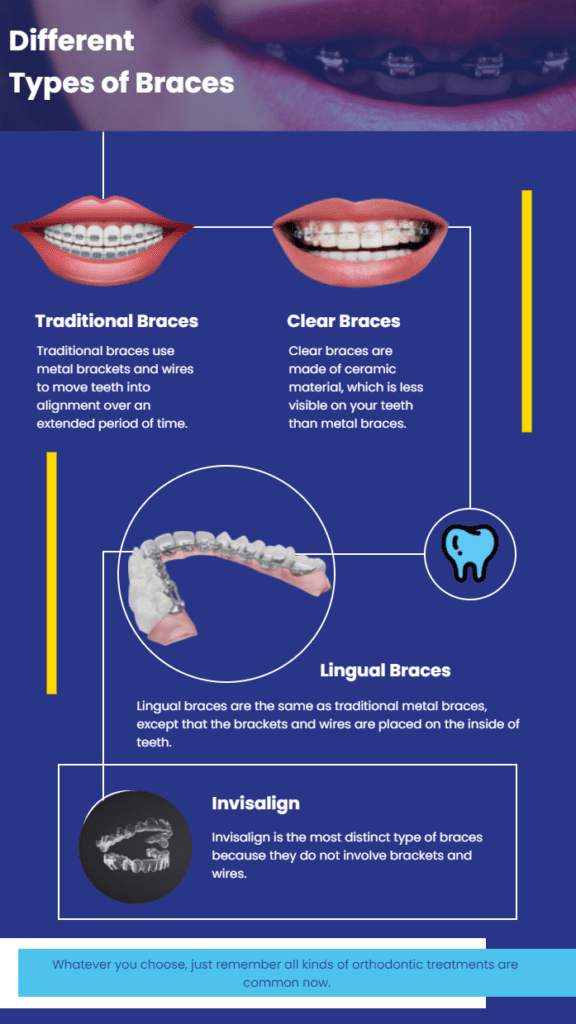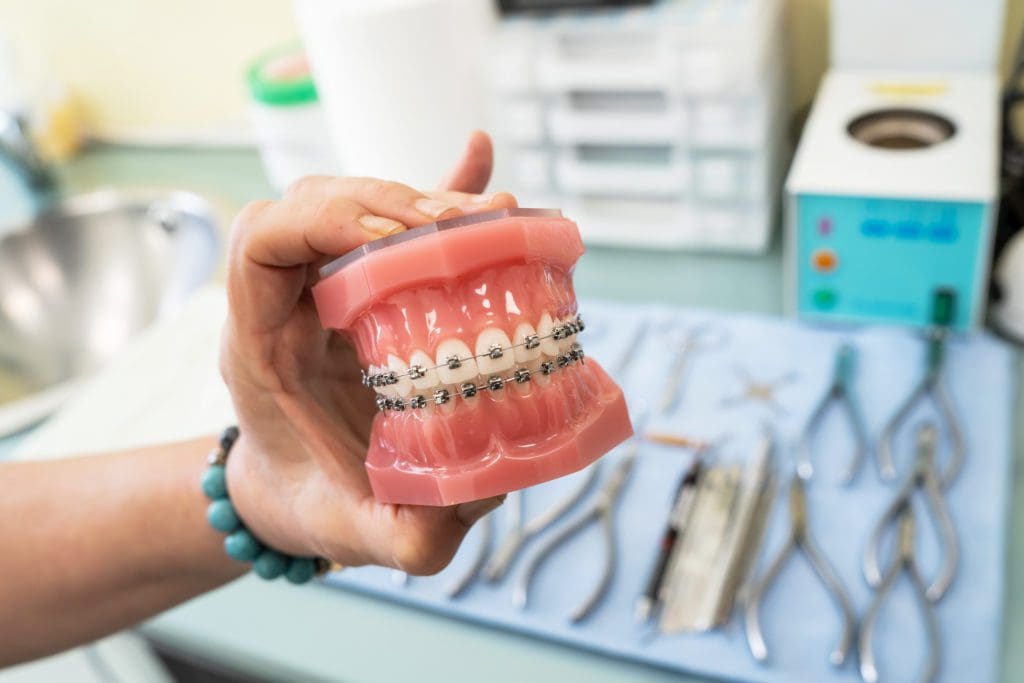The Benefits of Selecting a Cumming Orthodontist for Your Braces and Aligners
The Benefits of Selecting a Cumming Orthodontist for Your Braces and Aligners
Blog Article
Comprehensive Guide to Orthodontics Procedures for Remedying Dental Misalignments
In the realm of orthodontics, the journey to accomplishing a perfectly straightened smile entails a myriad of treatments tailored to fix oral misalignments. From conventional braces to unseen aligners and even surgical options, the field of orthodontics supplies a variety of solutions to address varying degrees of dental irregularities. Comprehending the intricacies of each treatment, including their mechanisms, advantages, and possible downsides, is crucial in making educated decisions regarding one's orthodontic treatment. As we browse with the comprehensive guide to orthodontic treatments for dealing with dental imbalances, the elaborate information of each approach will unfold, dropping light on the path toward a unified and useful oral positioning.
Orthodontic Procedures Introduction

In enhancement to clear aligners and typical dental braces, orthodontists might additionally recommend various other treatments like headwear, palatal expanders, or retainers to address particular alignment problems (cumming aligners). These procedures are customized to each client's unique demands and may include a combination of treatments to attain the desired outcomes. Regular modifications and tracking are essential parts of orthodontic treatment to guarantee progress is on track and to make any type of needed modifications in the process. By undertaking orthodontic procedures, patients can not only achieve a straighter grin but likewise boost their overall dental health and function.
Traditional Dental Braces: Exactly How They Work
When considering orthodontic treatments for dental imbalances, traditional dental braces stand out as a time-tested approach for dealing with teeth positioning. Standard braces consist of braces, cords, and bands that work together to apply continual pressure on the teeth, slowly relocating them into the desired placement.
As stress is used to the teeth with the dental braces, the bone bordering the teeth is reshaped to support the brand-new tooth positions. People will certainly need normal changes at the orthodontist's workplace to make sure the braces continue to use the appropriate stress for efficient teeth activity.
Invisible Aligners: Cons and pros
Undetectable aligners offer a very discreet and hassle-free alternative to standard braces for fixing oral misalignments. These clear, tailor-made trays are basically unseen when worn, making them an enticing alternative for individuals looking for an extra visually pleasing orthodontic therapy. Among the key advantages of undetectable aligners is their removability, permitting less complicated upkeep of oral hygiene compared to standard braces. Individuals can remove the aligners before consuming or cleaning their teeth, lowering the danger of food getting stuck in the appliance and simplifying the cleansing process.

Surgical Orthodontic Options
Surgical treatments in orthodontics look at here now existing practical choices for addressing complicated oral imbalances that may not be successfully solved with standard orthodontic therapies. While unseen aligners and typical dental braces can fix lots of orthodontic problems, certain situations require medical treatment to accomplish optimum results. Surgical orthodontic options are commonly recommended for serious malocclusions, significant jaw discrepancies, and situations where the underlying bone structure requires adjustment to accomplish proper positioning.
One typical surgical orthodontic treatment is orthognathic surgery, which involves repositioning the jaws to deal with functional problems such as problem talking or eating. This surgical treatment is frequently done in collaboration with an orthodontist who helps line up the teeth prior to and after the treatment. Surgical orthodontics may likewise involve procedures to expose affected teeth, eliminate excess periodontal tissue, or improve the jawbone to produce a much more unified facial account.
Before thinking about medical orthodontic alternatives, patients undertake a comprehensive analysis to determine the requirement and prospective benefits of such interventions. cumming orthodontics. While surgical procedure might seem difficult, it can substantially improve both the feature and looks of the smile in cases where standard orthodontic therapies drop short
Retainers and Post-Treatment Treatment

Failing to comply with post-treatment treatment guidelines can result in relapse, where the teeth gradually move back in the direction of their original positions. Regular retainer wear, excellent oral health, and normal oral examinations are essential for preserving the results accomplished through orthodontic surgery and guaranteeing the long-lasting stability of the fixed dental placement.
Final Thought
In final thought, orthodontic treatments offer numerous alternatives for dealing with oral imbalances. Surgical orthodontic options are readily available for extra extreme misalignments. In find general, orthodontic procedures can effectively enhance oral wellness and aesthetic look.
As we navigate via the extensive overview to orthodontic procedures for dealing with oral misalignments, the elaborate information of each approach will certainly unfold, dropping light on the course towards a practical and harmonious dental placement. - cumming orthodontist
One of the most usual orthodontic treatments is the usage of braces, which consist of steel braces and cables that apply gentle stress to gradually move teeth into the desired setting.When considering orthodontic treatments for oral misalignments, conventional dental braces stand out as a time-tested method for remedying teeth positioning. In addition, undetectable aligners may not be suitable for intricate orthodontic issues that need even more substantial teeth activity, as they are normally recommended for light to moderate instances. Retainers are customized orthodontic tools created to hold teeth in their fixed settings after the completion of orthodontic therapy.
Report this page